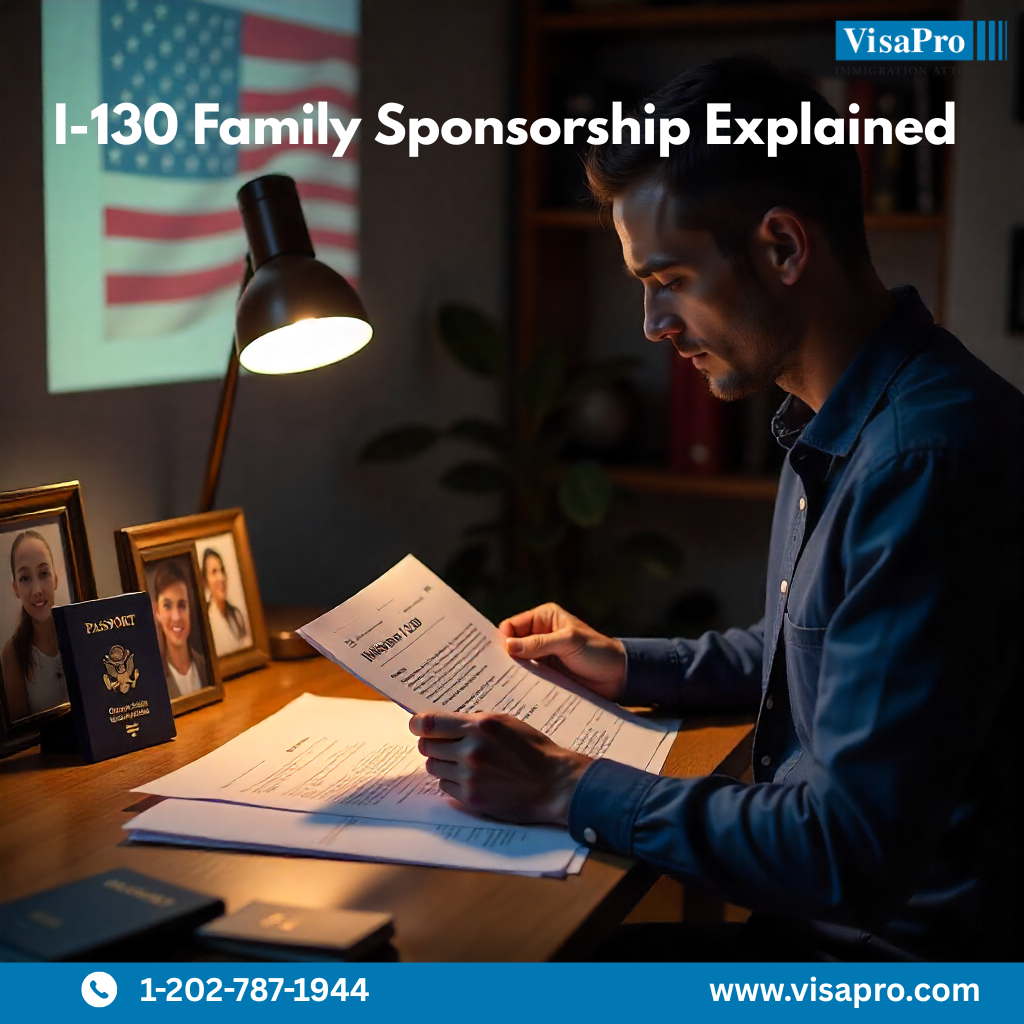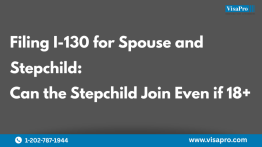Quick Summary:
Moving back to the U.S. with your foreign national spouse requires careful planning and understanding of immigration processes. Direct consular filing for exceptional circumstances is now extremely limited, making filing form I-130 petition directly with U.S. Citizenship & Immigration Services in the U.S. the primary path for most couples. Start early, the process typically takes 1-2 years from filing to visa approval.
Understanding the New Reality: Why Direct Consular Filing Is No Longer Your Go-To Option
Direct consular filing of the Form I-130 was once a streamlined pathway that allowed U.S. citizens living abroad to process their spouse’s immigration visa directly through USCIS offices located within U.S. consulates throughout the world. However, this convenience has been significantly restricted and is now available only under very specific circumstances.
The reality is stark: unless you meet exceptional criteria such as serious illness affecting the U.S. citizen or immediate family member, severe deterioration of country conditions, or unexpected job relocation requirements, you’ll need to follow the standard marriage-based immigrant petition process petition process through USCIS.
For U.S. citizens living abroad with foreign spouses, timing and strategy are critical. Knowing whether you qualify for direct consular filing I-130 or need to proceed through regular I-130 processing can help you avoid painful delays. Families often underestimate the wait times, which can cause disruptions to careers, children’s schooling, or urgent relocations.

The I-130 Petition Process: Your Primary Path to Bring Foreign Spouse to US
The I-130 Petition for Alien Relative has become the standard route to bring your foreign spouse to the U.S. This process involves filing the Form I-130, Immigrant Petition for Alien Relative with U.S. Citizenship and Immigration Services (USCIS), followed by consular processing at the U.S. embassy or consulate in your spouse’s home country or country of residence.
The I-130 process typically unfolds in several distinct phases. First, the US citizens spouse files the petition with USCIS, with processing times usually averaging 8-15 months for approval depending on current processing times and your service center. Once approved, the case transfers to the Dept. of State’s National Visa Center (NVC) for document collection and fee processing, adding another 2-5 months. Finally, your spouse will attend an interview at the U.S. embassy or consulate, which can be scheduled 2-6 months, on average after NVC has completed its processing.
Real-world example: Sarah, a U.S. citizen working in Singapore, married her Malaysian husband in 2023. She filed the I-130 petition in January 2024, received approval in February 2025, completed NVC processing by April 2025, and her husband’s interview was scheduled for June 2025. Total timeline: 18 months from filing to visa issuance.
The key to success lies in meticulous documentation. You’ll need to prove the legitimacy of your marriage through photos, joint financial accounts, lease agreements, travel records, and affidavits from family and friends. Missing or insufficient evidence is one of the most common reasons for delays or denials.

Exceptional Circumstances: When Direct Consular Filing Might Still Be Available
While direct consular filing exceptional circumstances are rare, understanding what qualities can be crucial if you face urgent situations. The U.S. Department of State recognizes only specific scenarios that warrant bypassing the standard I-130 process.
Medical emergencies involving the U.S. citizen petitioner or immediate family members represent the most commonly approved exceptional circumstances. This includes terminal illnesses, urgent need for medical care available only in the United States, or situations where the U.S. citizen’s health requires immediate relocation. Documentation from medical professionals is essential, including detailed prognoses and treatment recommendations.
Severe country condition deterioration is another recognized exceptional circumstance. This typically involves situations where the country of residence has experienced significant political instability, natural disasters, or security threats that make continued residence dangerous or impossible. Recent examples have included situations in countries experiencing civil unrest or major natural disasters.
Unexpected job relocation represents the third category of exceptional circumstances. This applies when U.S. citizens face sudden employment transfers or job loss that requires immediate return to the United States. However, the definition of “unexpected” is strictly interpreted, planned career moves or voluntary job changes typically don’t qualify.
To request consideration under exceptional circumstances, you’ll need to contact the U.S. embassy or consulate directly with comprehensive documentation supporting your claim. Be prepared for scrutiny, as consular officers carefully evaluate each request to ensure it meets the strict criteria.
Case Example:
- Maria, a U.S. citizen living in Argentina with her husband, applied for Direct Consular Filing when her father in the U.S. was diagnosed with terminal cancer. The embassy accepted the filing under humanitarian grounds, allowing her spouse to immigrate in under 6 months.
- By contrast, Tom, a U.S. citizen teaching abroad in Japan, tried to use DCF to return early with his wife. Because he did not have an emergency circumstance, the embassy refused Tom’s request to accept Form I-130. Tom had to file through USCIS and wait over 18 months.
Timeline Planning: Why Starting Early Is Essential for Success
Bringing a foreign spouse to us requires strategic timeline planning that accounts for multiple variables and potential delays. The standard process now takes 12-24 months from initial filing to visa issuance, but several factors can extend this timeline significantly.
Current USCIS processing times vary dramatically by service center and case type.
NVC processing adds another layer of complexity. Document submission, review, and scheduling can take 2-6+ months depending on the completeness of your initial submission and the embassy’s interview availability. Popular embassy locations like Mumbai or Manila often have longer wait times than smaller posts.
Consider this timeline breakdown for a typical case:
- I-130 filing to approval: 10-15 months
- NVC document processing: 2-5 months
- Interview scheduling: 2-6+ months
- Administrative processing (if required): 1-6 months
VisaPro Tip: Begin planning at least 24-30 months before you intend to move back to the U.S. to avoid long periods of separation.
Moving back with a foreign spouse is not a quick process. Without proper planning, families often face months apart, career disruption, or financial hardship.
If you want to move back to the U.S. with your spouse, try to plan at least 1.5 to 2 years ahead. Early planning avoids painful separation.
Examples of Poor vs. Smart Planning:
- Poor Planning: Sarah received a U.S. job offer in January with a requirement to move to the U.S. in July. She and her spouse focused on moving back to the U.S. and did not investigate the immigration process. In June, she contacted her attorney to get the process started- the couple ended up living apart for over a year.
- Smart Planning: John received the same job offer but he and Aisha began their I-130 process as soon as he got the job offer. John and Aisha ended up being separated for less than 6 months.
Common Myths About Bringing A Foreign Spouse To The U.S.
Many U.S. citizens misunderstand how immigration works when moving back with a spouse.
There is no automatic green card for your spouse just because you’re a U.S. citizen. Every foreign spouse must go through the formal immigrant visa process.
Myth vs. Reality:
- Myth: “As a U.S. citizen, my spouse can enter with me anytime.”
- Reality: Your spouse cannot simply arrive and adjust status at the airport. They need an immigrant visa or other lawful entry.
- Myth: “DCF is an easy shortcut.”
- Reality: Direct Consular Filing is restricted to emergencies. Most couples must use the standard I-130 route.
- Myth: “If my spouse visits on a tourist visa or Visa Waiver, we can just adjust.”
- Reality: Entering with tourist intent with the intent to immigrate is fraught with risk and can result in allegations of misrepresentation or fraud.
Common Challenges and How to Overcome Them
US citizens living abroad with foreign spouses face unique challenges that domestic couples don’t encounter. Understanding these obstacles and preparing solutions in advance can prevent costly delays and denials.
Maintaining or establishing U.S. domicile while living abroad presents a complex challenge. USCIS requires evidence that you have maintained or intend to establish residence in the United States when your spouse’s visa is approved. This can include job offers, property ownership, family ties, or concrete plans for relocation.
Real-world example: Michael, a U.S. citizen who had lived in Germany for 15 years, struggled to demonstrate domicile. He strengthened his case by securing a job offer in the United States, opening a U.S. bank account, and obtaining letters from family members offering temporary housing support.
Previous immigration violations or unlawful presence can create complex waiver situations. If your spouse has overstayed visas, worked without authorization, or has other immigration violations, you may need to file additional waivers that extend processing time significantly.
Age differences, cultural backgrounds, or unusual meeting circumstances (like online relationships) may trigger additional scrutiny. Prepare detailed explanations and extra documentation to address potential concerns proactively.
The financial support obligations when bringing a foreign spouse to the U.S. is another complicating factor and involves more than just meeting minimum income requirements. Understanding the full scope of financial obligations helps couples prepare appropriately and avoid surprises.
Form I-864 Affidavit of Support creates a legally enforceable contract between you and the U.S. government. You’re promising to maintain your spouse above the poverty line until they become a U.S. citizen, accumulate 40 quarters of work, or die.
If you don’t have U.S. income that will continue after entry, you will need to rely on assets to prove your ability to support your spouse. The value of the assets must be 3 times the amount listed on the poverty guidelines.
Joint sponsors provide an alternative when primary sponsors can’t meet financial requirements. Joint sponsors must be U.S. citizens or permanent residents, meet the income requirements independently, and accept the same legal obligations as primary sponsors. Choose joint sponsors carefully, as they’re equally liable for support obligations.
Professional Legal Assistance: When and Why You Need It
Bringing a foreign spouse to the U.S. requires patience and careful strategy. While direct consular filing exceptional circumstances may help in rare emergencies, most couples will need to go through the longer I-130 process. Early preparation is the key to keeping your family together and avoiding long separations.
Need help deciding the best path for bringing your foreign spouse to the U.S.? VisaPro has guided U.S. citizens worldwide through consular processing, overcoming delays, and reuniting families successfully. Schedule your free consultation today to start planning your move home with confidence.
Real-world example: Jennifer and Ahmed faced challenges due to their 15-year age difference and the fact they met online. Their attorney helped them compile extensive documentation of their relationship development, arranged affidavits from family members, and prepared them thoroughly for the consular interview. Their case was approved without additional administrative processing.
The cost of legal representation varies widely but consider it an investment in your case’s success and your peace of mind.
Frequently Asked Questions (FAQ)
1.Can I still use direct consular filing I-130 if I’m a U.S. citizen living abroad?
Direct consular filing is now extremely limited and available only under exceptional circumstances such as serious medical emergencies, severe country condition deterioration, or unexpected job relocations. Most couples must use the standard I-130 petition process through USCIS, which takes 12-24 months to complete.
2.How long does it take to bring a foreign spouse to the U.S. through the I-130 process?
The typical timeline is 12-24 months from filing to visa issuance. This includes 10-15 months for USCIS I-130 approval, 2-5 months for NVC processing, and 2-6 months for interview scheduling, though individual cases may vary based on service center processing times and embassy availability.
3.What qualifies as direct consular filing exceptional circumstances?
Exceptional circumstances include terminal illness or urgent medical needs of the U.S. citizen or immediate family member, severe deterioration of country conditions making residence dangerous, or truly unexpected job relocations requiring immediate return to the United States. Documentation must be comprehensive, and the circumstances must be genuinely beyond the petitioner’s control.
4.Do I need to prove U.S. domicile when bringing a foreign spouse to the us?
Yes, you must demonstrate intent to establish residence in the United States when your spouse’s visa is approved. This can include job offers, property ownership, family ties, concrete relocation plans, or maintaining financial and legal ties to the United States while living abroad.
5.Can my foreign spouse work in the U.S. while the I-130 is pending?
No, your spouse cannot work in the United States based on a pending I-130 petition unless they can obtain authorization to work (e.g., H-1B, L-1, etc). In certain circumstances, they can then file for Adjustment of Status once they are in the U.S.
6.What happens if we don’t meet the financial requirements for how to bring my foreign spouse to the us?
If you don’t meet the income requirements for Form I-864, you can use assets to supplement income (typically at a 5:1 ratio), find a qualified joint sponsor who meets the requirements independently, or wait until your income increases to the required level before filing.
7.What documents do I need to prove my marriage is genuine when moving back to us with a foreign spouse?
Essential documents include joint financial accounts, shared property ownership, insurance beneficiary designations, photos spanning your relationship, communication records, affidavits from family and friends, joint travel records, and any evidence demonstrating shared life and decision-making as a married couple.
8.How do I avoid delays when bringing a foreign spouse to the U.S.?
Start early, file complete applications, gather strong evidence of marriage, prepare sponsorship documents, and maintain clear communication with NVC and the consulate.
Need help navigating the complex process of bringing your foreign spouse to the United States?
VisaPro has guided thousands of U.S. citizens through successful spouse immigration cases, securing USCIS approvals, avoiding costly delays, and reuniting families across the globe. Schedule your strategy call today.
What VisaPro Customers Are Saying
The US [B-1] Visa has always been a tough ride, and being denied a few times it makes it even worse. But thanks to VisaPro and their meticulous processing I was granted a Visa. I would like to thank you and all the people involved in making this a success. I would like to recommend VisaPro to all those who seek peace of mind and hassle free Visa processing.”



 Manas Bhat, Director Operations, First Houston Mortgage India
Manas Bhat, Director Operations, First Houston Mortgage India

